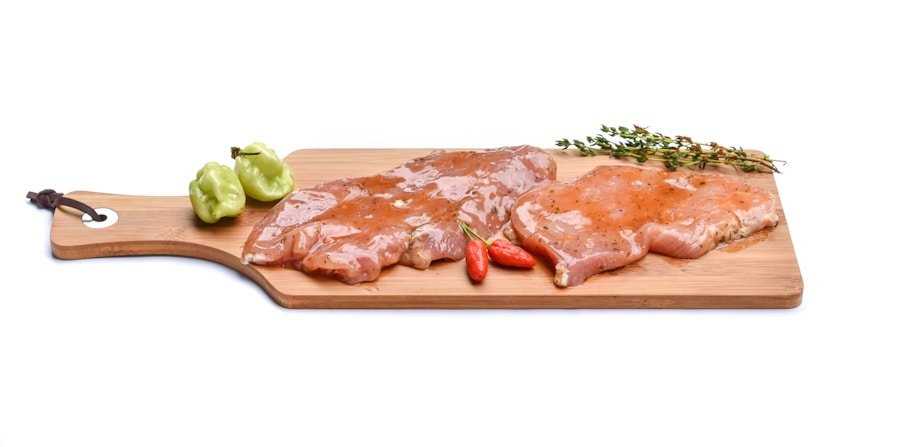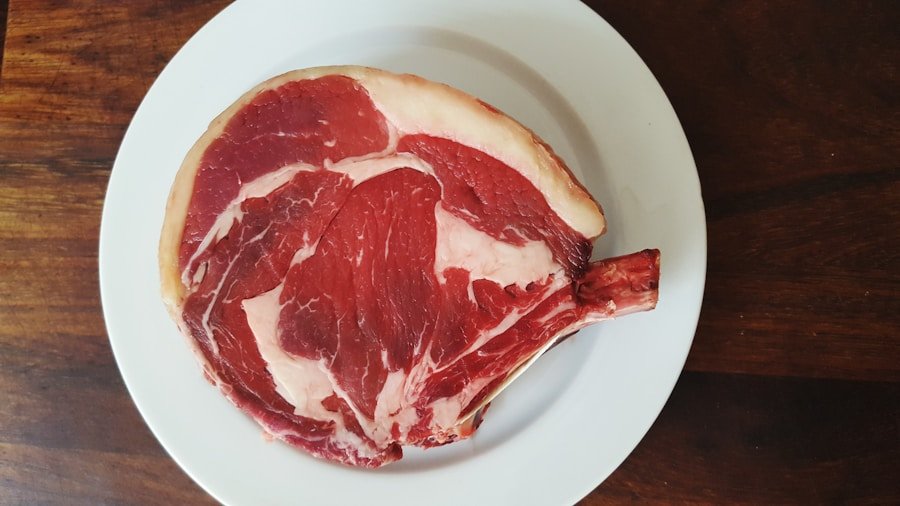Properly defrosting meat is a critical step in food preparation that significantly impacts both safety and quality. When meat is frozen, ice crystals form within its cellular structure. If not thawed correctly, these ice crystals can rupture the cells, leading to a loss of moisture and resulting in a dry, less palatable product.
Moreover, improper defrosting can create an environment conducive to bacterial growth, posing serious health risks. Pathogens such as Salmonella and E. coli thrive in the temperature range between 40°F and 140°F, often referred to as the “danger zone.” Therefore, understanding the importance of safe defrosting methods is essential for anyone who handles meat.
In addition to safety concerns, the method of defrosting can also affect the texture and flavor of the meat. For instance, meats that are thawed too quickly or at inappropriate temperatures may not only lose moisture but also develop an undesirable texture. This is particularly true for delicate proteins like fish or poultry, which can become mushy if subjected to rapid temperature changes.
Thus, mastering the art of defrosting is not merely a matter of convenience; it is fundamental to achieving culinary excellence and ensuring that meals are both safe and enjoyable.
Key Takeaways
- Properly defrosting meat is important for food safety and to ensure the best quality and taste of the meat.
- Safe methods for defrosting meat include using the refrigerator, cold water, and the microwave.
- Defrosting meat in the refrigerator is the safest method as it keeps the meat at a consistent, safe temperature.
- Defrosting meat in cold water is a quicker method, but it requires changing the water every 30 minutes to ensure it stays cold.
- Defrosting meat in the microwave is the fastest method, but it’s important to cook the meat immediately after to ensure food safety.
Methods for Safely Defrosting Meat
Choosing the Right Method
The three most commonly recommended methods are refrigerator thawing, cold water thawing, and microwave thawing. Each method varies in terms of time required and the degree of control it offers over the thawing process. Understanding these methods allows cooks to choose the one that best fits their schedule and the type of meat they are preparing.
Refrigerator Thawing: The Safest Option
Refrigerator thawing is often regarded as the safest method because it keeps meat at a consistent, safe temperature throughout the process. This method requires planning ahead, as it can take several hours or even days depending on the size and type of meat.
Alternative Methods: Cold Water and Microwave Thawing
Cold water thawing is a faster alternative that involves submerging the meat in cold water, which can significantly reduce thawing time while still maintaining safety if done correctly. Microwave thawing is the quickest method but requires careful attention to avoid partially cooking the meat. Each method has its own set of guidelines that must be followed to ensure that food safety is maintained throughout the thawing process.
Defrosting Meat in the Refrigerator

Defrosting meat in the refrigerator is widely considered the gold standard for safe thawing. This method involves transferring frozen meat from the freezer to the refrigerator and allowing it to thaw gradually at a controlled temperature, typically below 40°F. The primary advantage of this method is that it minimizes the risk of bacterial growth since the meat remains at a safe temperature throughout the thawing process.
For example, a large roast may take 24 hours or more to fully defrost in the refrigerator, while smaller cuts like chicken breasts or steaks may only require a few hours. One of the key benefits of refrigerator thawing is that it allows for flexibility in meal planning. Once meat has been defrosted in the refrigerator, it can remain safe for an additional one to two days before cooking, giving cooks ample time to decide on their meal preparations.
However, it is essential to keep in mind that while refrigerator thawing is safe, it does require foresight and planning. Cooks should always allocate enough time for larger cuts of meat to ensure they are fully thawed before cooking.
Defrosting Meat in Cold Water
| Defrosting Method | Time Required | Water Temperature |
|---|---|---|
| Cold Water | 1 hour per pound | 70°F (21°C) |
Cold water thawing is an effective method for those who need to defrost meat quickly while still adhering to food safety guidelines. This technique involves sealing the meat in a leak-proof plastic bag and submerging it in cold water. The water should be changed every 30 minutes to maintain a safe temperature and ensure even thawing.
For instance, a one-pound package of ground beef may take about an hour to thaw using this method, while larger cuts like a whole turkey may take several hours. The cold water method is particularly advantageous when time is of the essence, such as when unexpected guests arrive or when meal plans change at the last minute. However, it is crucial to monitor the water temperature closely; using warm or hot water can elevate the surface temperature of the meat into the danger zone, increasing the risk of bacterial growth.
Additionally, once meat has been thawed using this method, it should be cooked immediately to ensure safety.
Defrosting Meat in the Microwave
Microwave thawing is often seen as a last resort due to its speed but also its potential pitfalls. This method involves using the defrost setting on a microwave oven to thaw meat quickly. While this can be convenient for small cuts of meat or when time is limited, it requires careful attention to avoid partially cooking the meat during the process.
For example, if a chicken breast is left in the microwave for too long, it may begin to cook on the edges while remaining frozen in the center. One significant drawback of microwave thawing is that it can lead to uneven thawing, which may affect cooking times and result in inconsistent textures. Additionally, any meat that has been thawed in the microwave should be cooked immediately after thawing because some areas may have reached temperatures conducive to bacterial growth.
Therefore, while microwave thawing can be useful in certain situations, it should be approached with caution and awareness of its limitations.
Tips for Quick and Safe Defrosting

When time is of the essence but safety cannot be compromised, there are several tips that can facilitate quick and safe defrosting of meat. First and foremost, always plan ahead when possible; larger cuts of meat should ideally be moved from the freezer to the refrigerator well in advance of cooking. For those who need to use cold water or microwave methods, ensuring that meat is properly sealed can prevent cross-contamination and maintain quality.
Another useful tip is to break down larger cuts into smaller portions before freezing them initially. This not only speeds up the defrosting process but also allows for more flexibility when meal planning. For instance, instead of freezing a whole chicken, consider cutting it into parts; this way, individual pieces can be defrosted as needed without having to wait for an entire bird to thaw.
Additionally, using shallow containers for refrigerator thawing can help expedite the process by increasing surface area exposure.
Common Mistakes to Avoid When Defrosting Meat
Despite best intentions, many people make common mistakes when defrosting meat that can compromise both safety and quality. One prevalent error is leaving meat out at room temperature for extended periods. This practice can quickly elevate surface temperatures into unsafe ranges, allowing bacteria to proliferate rapidly.
It’s essential to remember that while freezing halts bacterial growth, it does not kill bacteria; thus, proper thawing methods must be employed. Another mistake involves neglecting to change water during cold water thawing or using warm water instead of cold water. Failing to change the water every 30 minutes can lead to uneven thawing and potential bacterial growth on the surface of the meat.
Additionally, some individuals may overlook proper sealing techniques when using cold water or microwave methods, which can lead to cross-contamination with other foods or surfaces in the kitchen.
Ensuring Food Safety After Defrosting Meat
Once meat has been successfully defrosted using any of these methods, ensuring food safety during subsequent handling and cooking becomes paramount. First and foremost, any meat that has been thawed should be cooked immediately if it was defrosted using cold water or microwave methods. This minimizes any risk associated with bacteria that may have developed during thawing.
Furthermore, it’s crucial to avoid refreezing meat that has been previously thawed unless it has been cooked first. Refreezing raw meat can compromise its texture and flavor due to moisture loss during freezing and thawing cycles. If there are leftovers from cooked meals involving previously frozen meat, those can be safely refrozen as long as they have been handled properly throughout preparation and storage processes.
By adhering to these guidelines and understanding the importance of proper defrosting techniques, individuals can ensure not only their safety but also enhance their culinary experiences with high-quality meals prepared from safely handled ingredients.
If you’re looking for ways to enhance your cooking skills, you may also be interested in learning how to make homemade tortillas. Check out this article on the 5 Best Tortilla Presses for Homemade Tortillas to find the perfect tool for creating delicious and authentic tortillas in your own kitchen.
FAQs
What is the safest way to defrost meat?
The safest way to defrost meat is to do so in the refrigerator. This method allows the meat to thaw at a safe temperature, reducing the risk of bacterial growth.
How long does it take to defrost meat in the refrigerator?
Defrosting meat in the refrigerator can take anywhere from a few hours to a day, depending on the size and thickness of the meat.
Is it safe to defrost meat at room temperature?
No, it is not safe to defrost meat at room temperature. This can allow bacteria to grow on the meat, increasing the risk of foodborne illness.
Can I defrost meat in the microwave?
Yes, you can defrost meat in the microwave using the defrost setting. However, it is important to cook the meat immediately after defrosting to ensure it is safe to eat.
What is the best way to quickly defrost meat?
The best way to quickly defrost meat is to use the cold water method. Place the meat in a sealed plastic bag and submerge it in cold water, changing the water every 30 minutes until the meat is thawed.

